Last time, we talked a little about some of the inspirations and lead up to the Mirror Blaze project. Today, we’re going to show our first experiments with mirrors and posts, from May and June 2015.
First, a note about how cats react to power tools:
The first mirrors arrived sometime in February, a time of somber reflection:
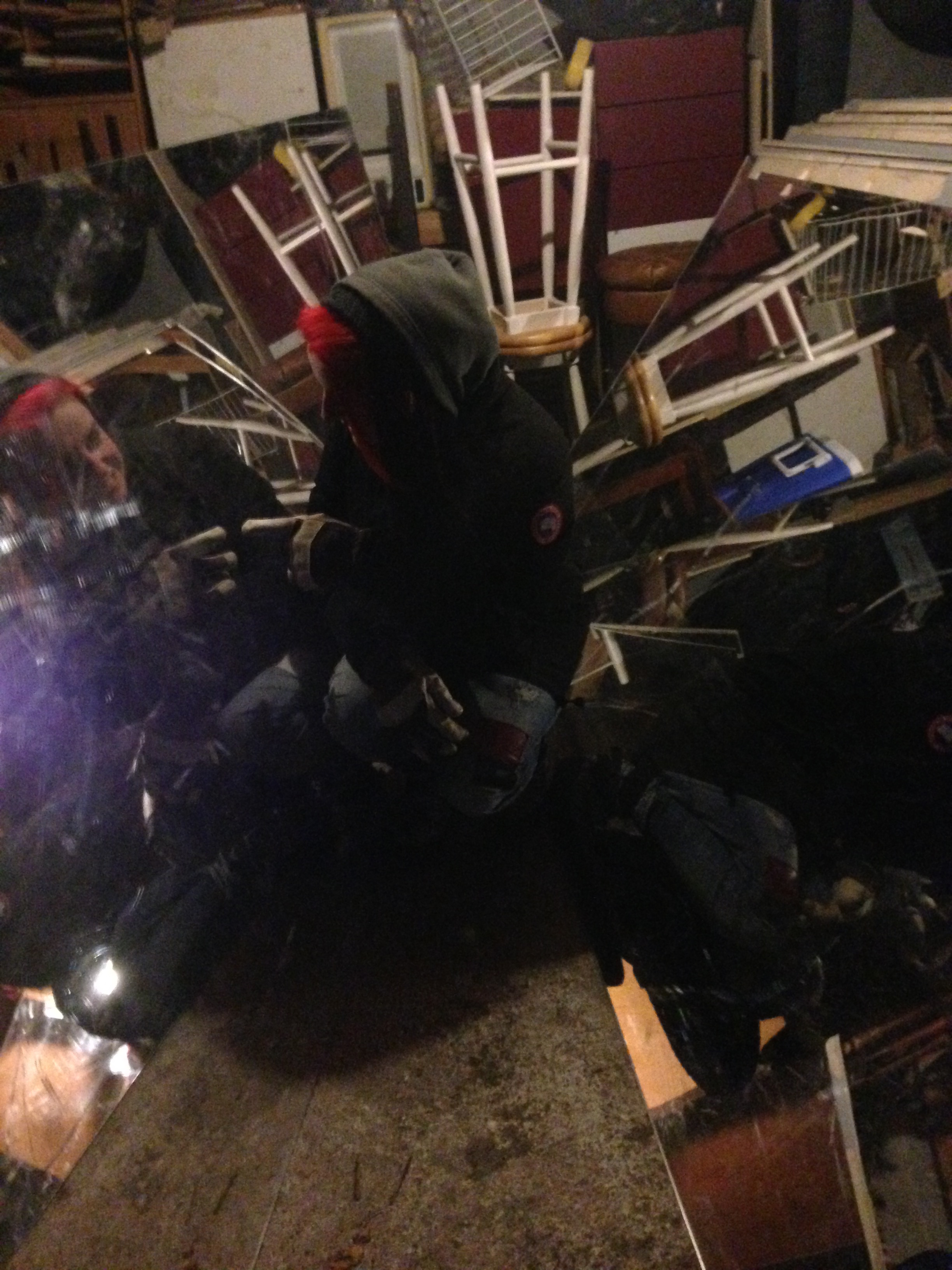
This first set of mirrors, which would end up being about 90% of the mirrors in the final mirror maze, were a wonderful gift from Trevyn. It’s not overstating it to say that this project would not have been possible (or would have cost twice as much) without his generous help:
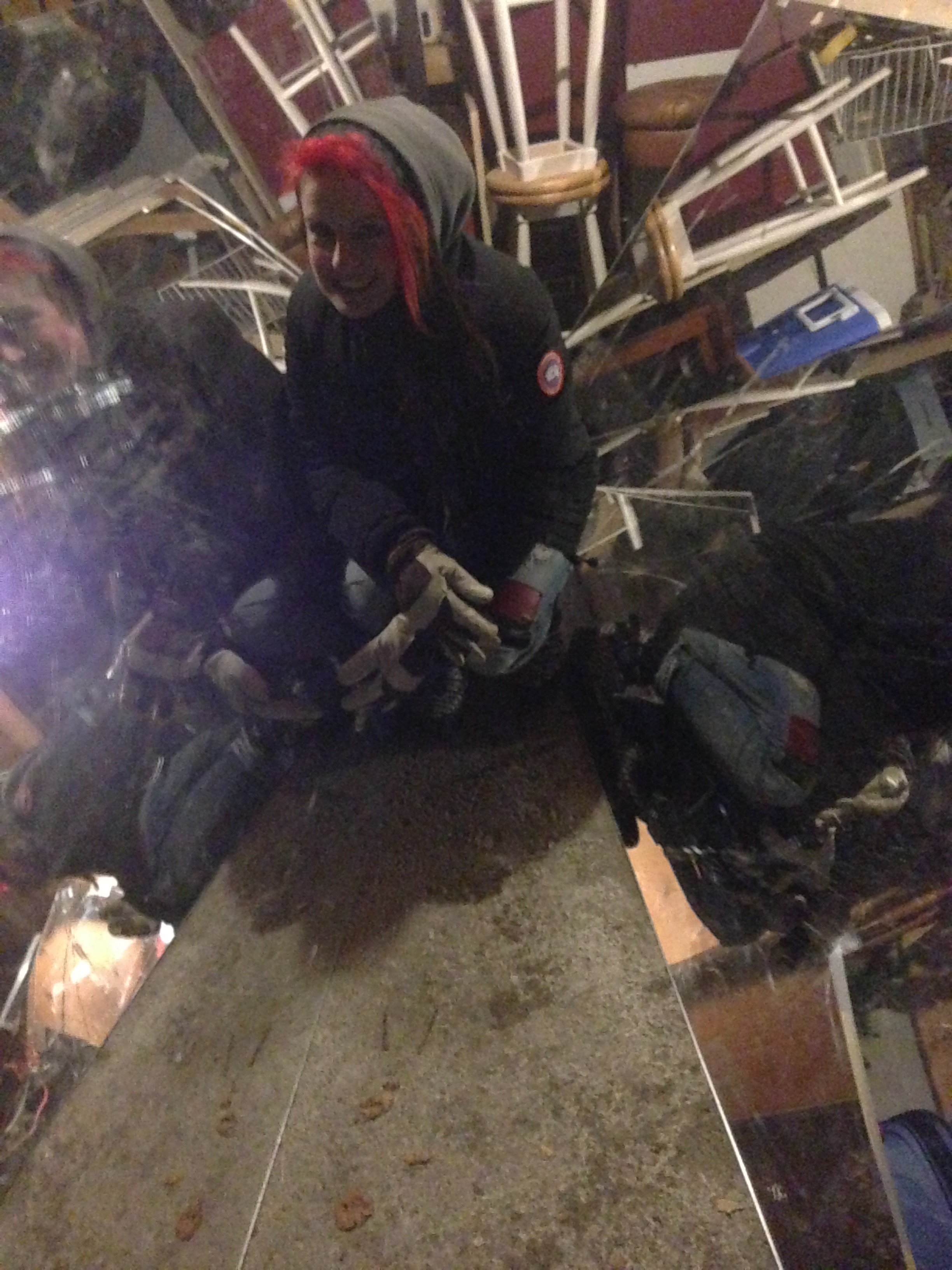
It being cold, and the mirrors being held together with double sided tape, we separated them as best we could, and went inside to wait out as much of the Canadian winter as we could.
We spent the time plotting geometry, and trying to uncover which shapes were most likely to contain a cat:
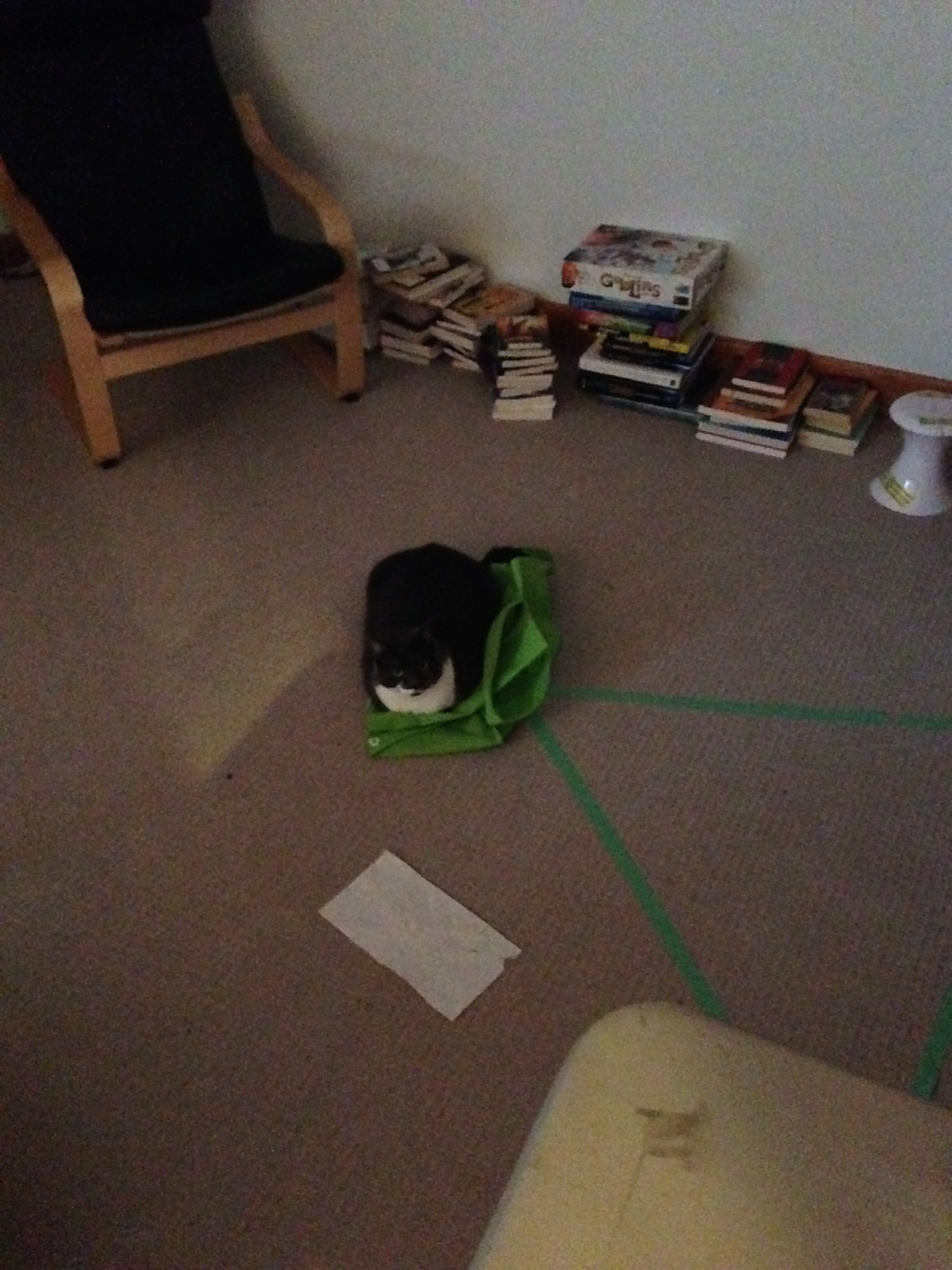

Note that the triangle in the photos above is 4′ per side, as the mirrors we were planning to use were 4′ or 4’1″ per side.
On June 6th, it was finally time to do our first experiments and build! We knew that we would have to purchase at least three two-way mirrors (to surround the flame effect), so we had purchased some half-thickness mirrors (three one-way, one two-way), in the hope that they would be thick enough to use.
We had two major problems that we were still trying to solve, though. The first was how to keep the structure up without using guy wires. We had experienced the horrors of tripping over guy wires every night in 2013, and we wanted to avoid this at all cost.
We had the bright idea of attaching the wooden 4″x4″ posts (we had at this point mostly decided on 4″x4″ wooden posts, after all of our ideas of custom-made metal 6-way symmetric metal posts fell by the wayside) into the ground with some sort of post or attachment. These ‘carport rebar’ devices felt very close to what we were looking for, but we were designing for 90km/h windstorms blowing on upright 4’x8′ panels. It’s difficult to see in the picture, but the rebar is only about 8″ long coming out of the bottom of the saddle, and we thought we would want at least a foot, probably two to be able to withstand the wind. Also, my wood-splitting and torque fears were triggered by the idea of only having one sideways bolt holding the post in place about 2″ from the bottom of the post, where it would be subject to the highest torque with not much wood right at the tip of the post taking all of the strain. However, as you’ll see later, this was the genesis of an idea:
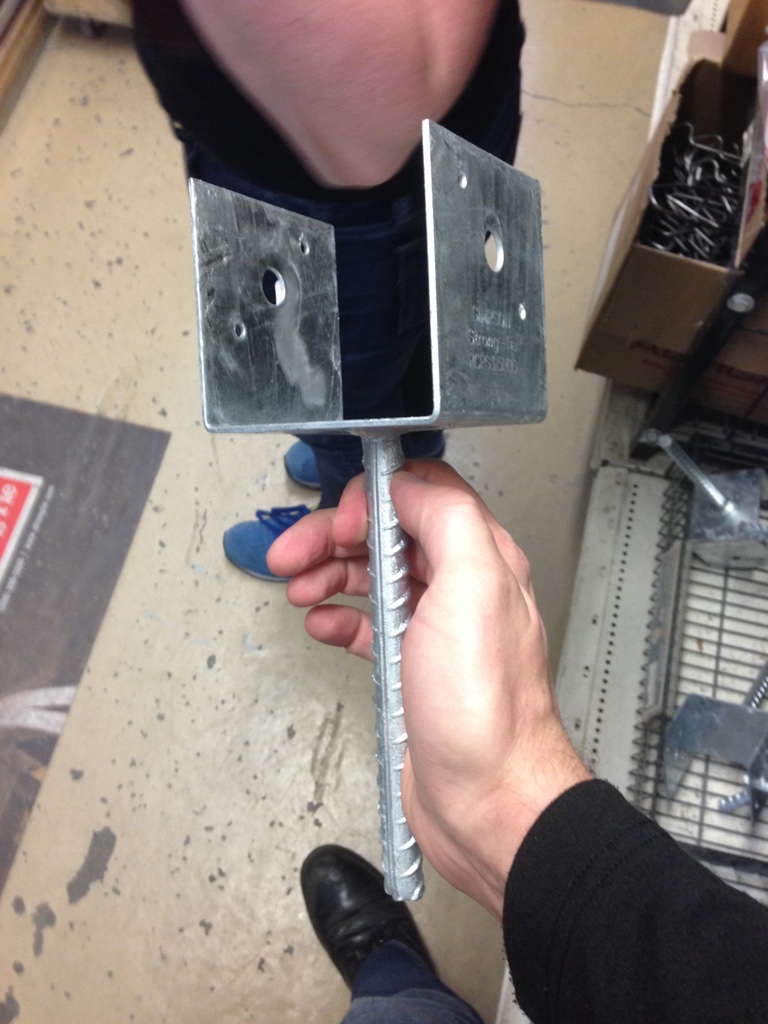
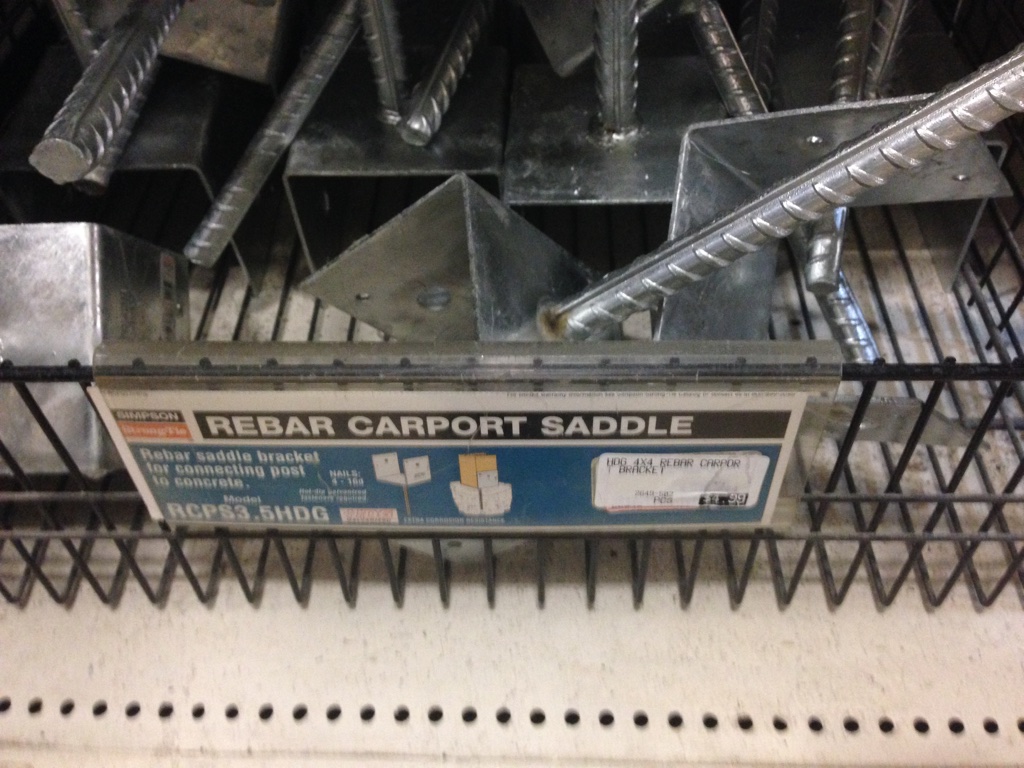
The other main problem was how to reliably and precisely make 60 degree angles between the mirrors, so that we would get the true tessellated triangular prism ‘hall of mirrors’ effect. We thought of using ‘Skewable Angle’ bendable metal connectors:
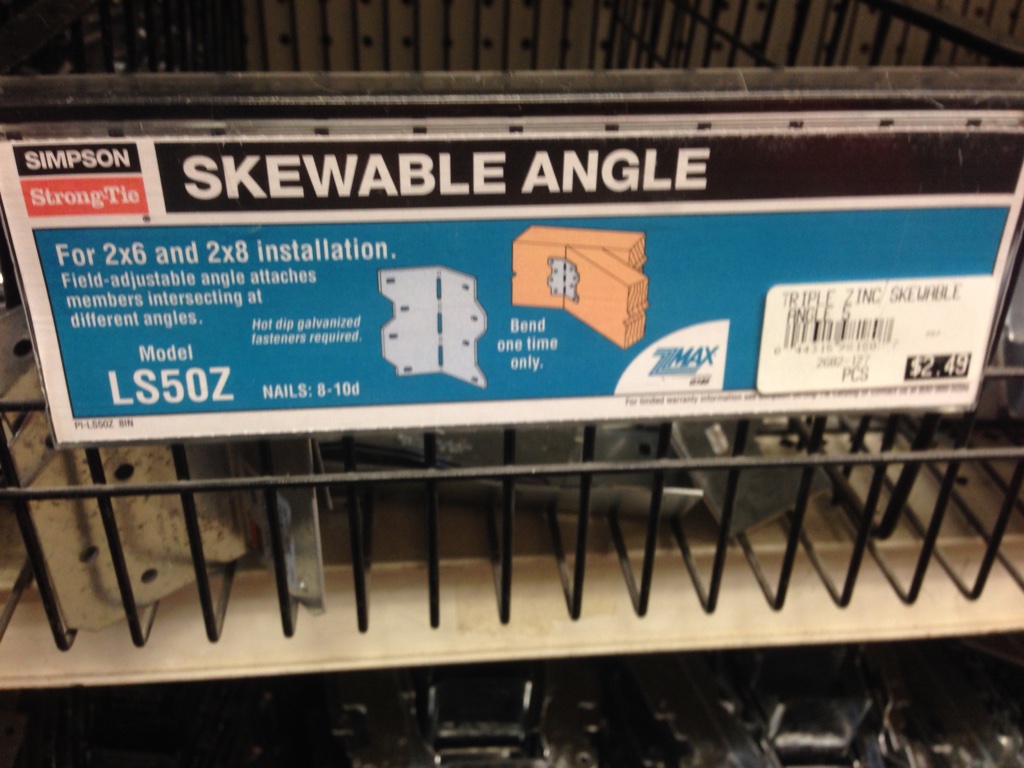
But looking at them, it occurred to us that we could just use hinges. They’d be more expensive, but but much more flexible, and likely much more durable. Thinking about it, hinges would allow more flexible assembly (and a lot of headaches, but that’s another story). We decided to try two different types of hinges, piano hinges:

And T-hinges. (It’s funny, looking at the product pages now, it’s clear that we wanted T-hinges, for their durability, and the simple fact that they’re built specifically for outdoor doors and gates, but at the time, it was difficult to know what was important in the design. We could only test and hope.):
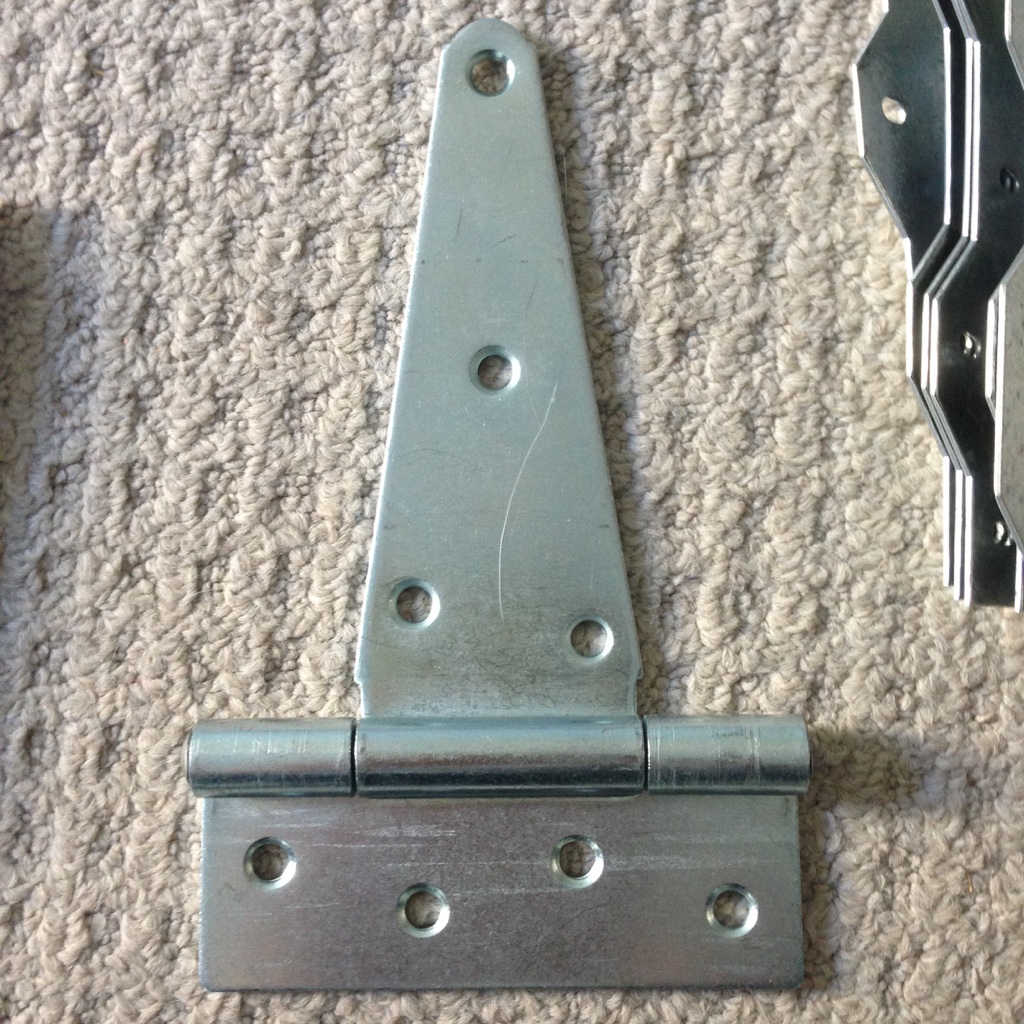
Next time, we’ll talk about how we used all of these components for our first integration test! Stay tuned!
One thought on “Building the Mirror Blaze in Pictures II: First Mirror and Post Experiments”